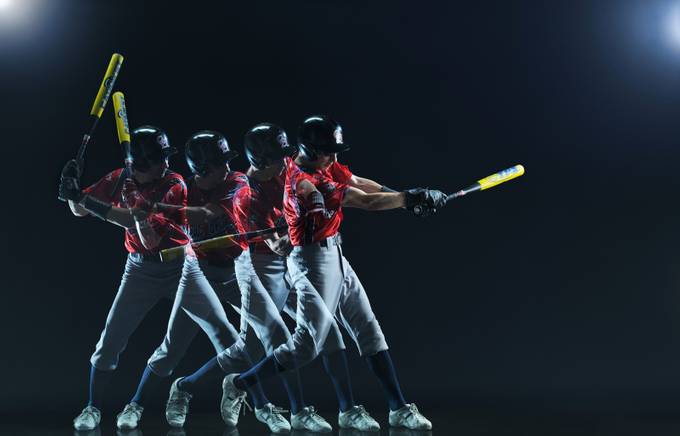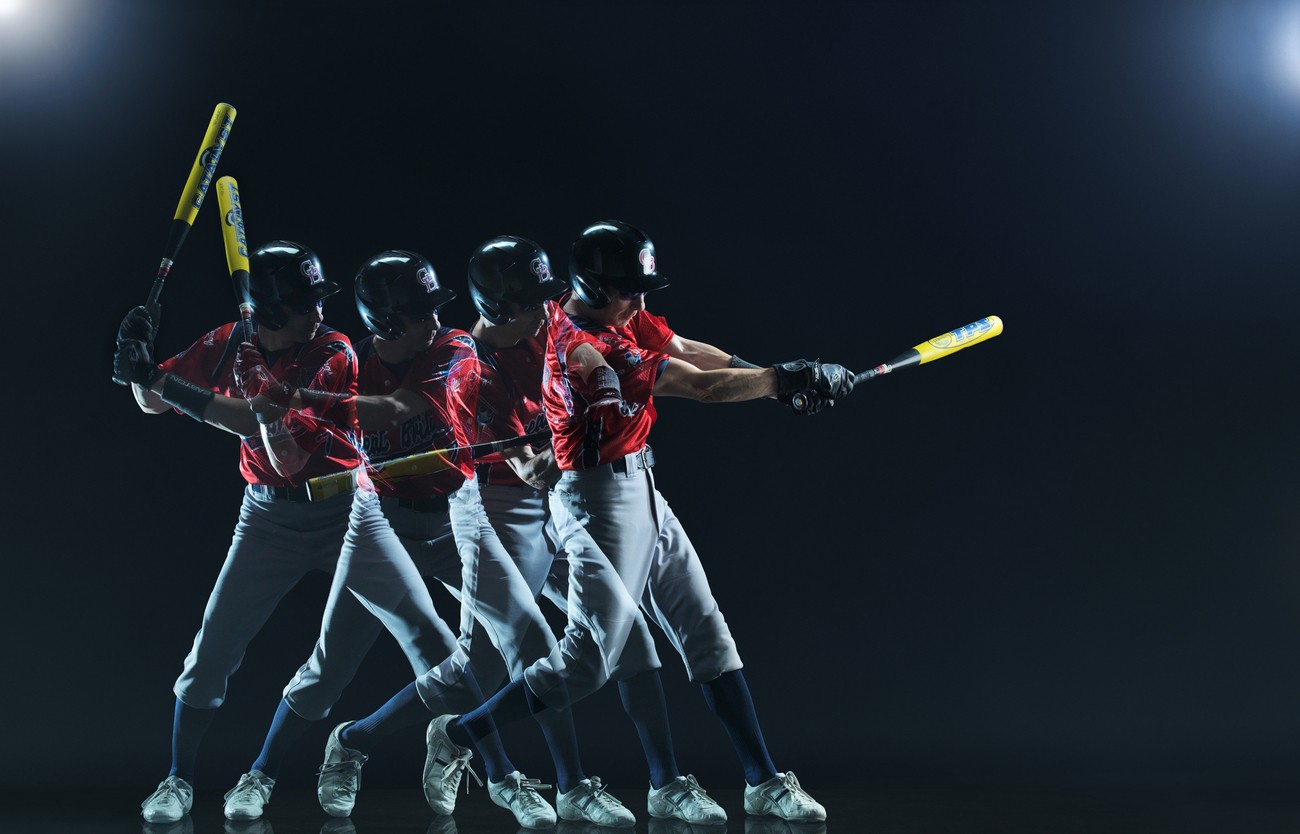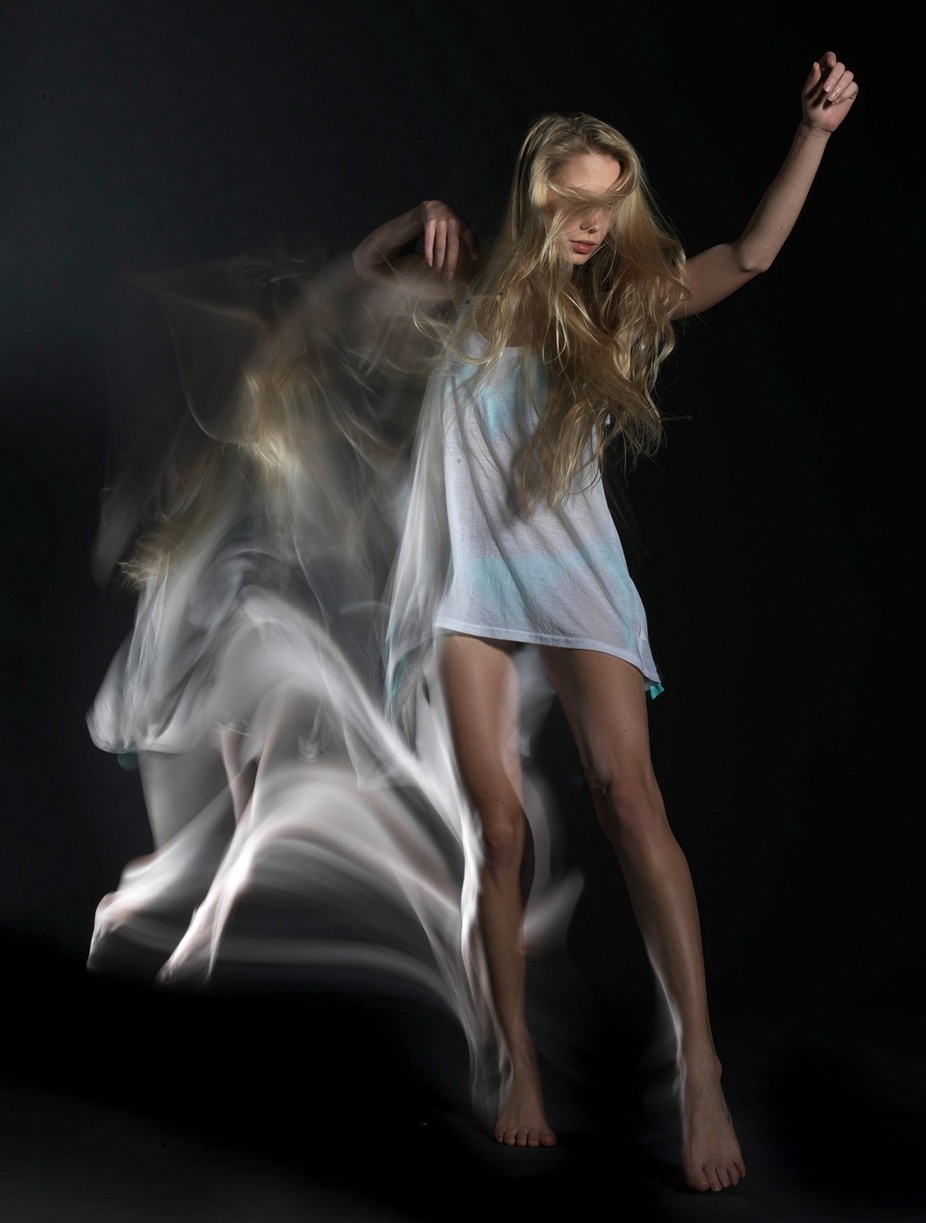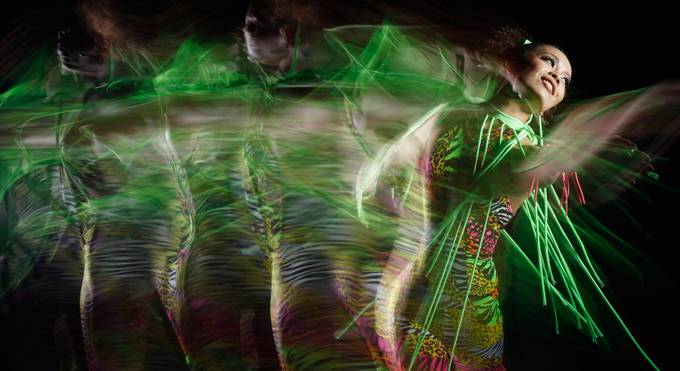Photographs mostly capture a very short moment in time. This means, that we can freeze very fast movement and show, what the human eye normally is not capable of seeing. Short flash durations are essential to do so.On the other hand it might be even more interesting, to show movements:

Here we want to illustrate several possibilities to show (or stop) movements in photography. To do so we use short flash durations or combine flash with continuous daylight (HMI). But first of all, Karl Taylor and Urs Recher will explain "how to" work with power packs and the camera to obtain perfect stroboscopic effects:
Karl explains:
My goal in this shot was to capture the ‘unseen’ motion in the action of the baseball players swing. In sports images like this often the technique of the sportsman is too fast for the human eye, however the event itself is not just one moment in time it is a continuous action that effectively has multiple stages.
The challenge is then how to capture this in a still image? Enter the Scoro and multiple flash burst! The Scoro not only has incredibly fast flash duration for freezing action but it also has other tricks up its sleeve such as multiple bursts of flash as well as combining packs with different delay times and different power settings. This is exactly what I needed to achieve the result.
To shoot this effectively as it is multiple exposures of flashes in the same photo you need a black background so I decided to place the baseball player on black with rim lighting to cleanly separate him from the background. For this I used two P70’s from the back edge lighting him. I then needed a further light at the top to accentuate the glossy helmet the best choice for this was the 30x120 Softbox to create a visible highlight in the helmet. Finally for the last flash exposure I wanted more of the front side of the player illuminated so here I used the large 120x180 Softbox.
In this shot however I only wanted the 120x180 Softbox to fire only in the last flash otherwise I risked overexposing the body of the baseball player through the sequence of shots. By using two Scoro packs I could set one of them to only fire on the last flash in the sequence by simply using the ‘flash delay’ function. This meant for the first 3 flashes it was just my rim lighting but for the 4th and final flash it was the rim lighting and the 120x180 Softbox together.
The other difficulty was in recording the player in a different position for each part of the swing otherwise the four exposures overlap each other causing the image to be too confusing and potentially overexposed. To overcome this the camera is turned during the exposure to ensure that the baseball player is recorded in separated positions in the final image.
The flash bursts were set for 0.3 of a second apart and I could then choose as many or as few flashes as I liked for the sequence. In this instance just 4 flashes gave the best result.
Checkout more How To Examples on Broncolor's Website.
Click on the images below to see how they were shot:






